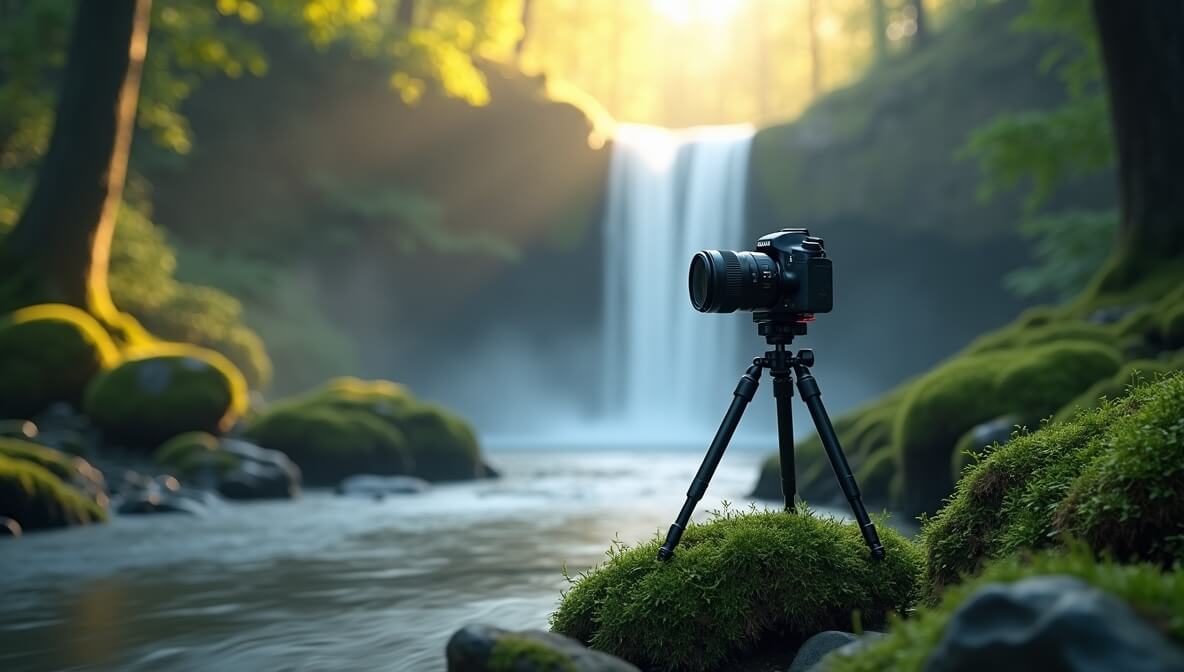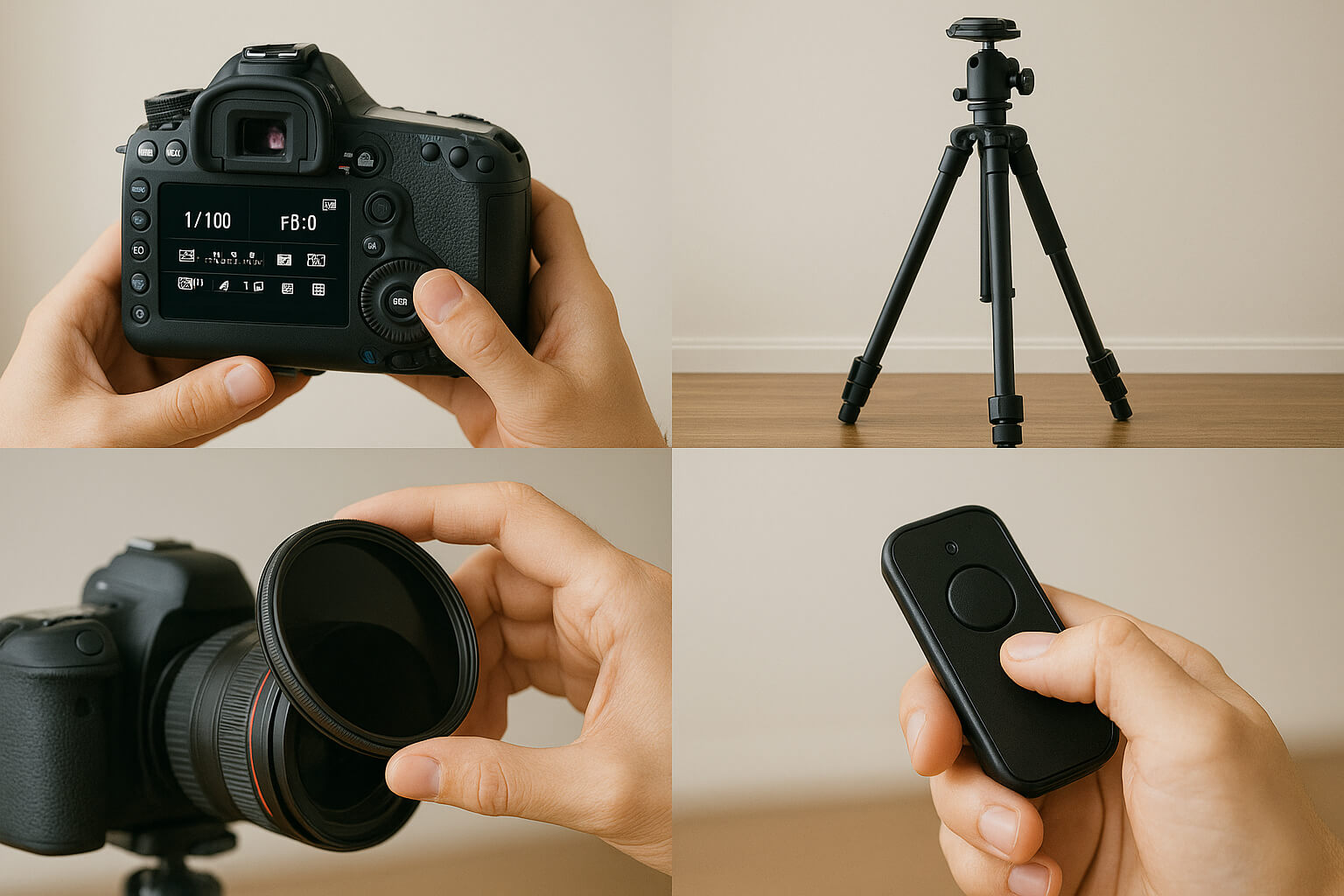May 21, 2025

Imagine this : You’re standing in front of a majestic waterfall, the roar of rushing water in your ears, and mist on your lens. You lift your camera, adjust your settings… and snap a photo that turns that powerful flow into a smooth, magical stream. That’s the magic of long exposure waterfall photography.
Whether you’re a beginner or an experienced landscape photographer looking to expand your skills, this guide will walk you through the art and science behind capturing breathtaking long exposure waterfall images — from essential gear to camera settings and pro-level tricks.
To achieve stunning long exposure shots, you need a camera that provides full manual control over shutter speed, ISO, and aperture. This is crucial because the beauty of long exposure lies in adjusting these settings to capture motion and light trails over extended periods. Cameras that allow manual settings are essential for beginners and professionals alike.
If you're looking to take it a step further, more advanced options like the Canon EOS R5 or Nikon Z7 II provide even more control over your photography, ensuring crisp and detailed long exposure shots.
Long exposure photography demands stability, as even the slightest movement can blur your image. A solid tripod is a must-have for this type of photography, as it keeps the camera stable during extended exposures.
A Neutral Density (ND) filter is an essential tool for long exposure photography, especially when shooting in bright daylight. This filter reduces the amount of light that enters the lens, allowing you to use slow shutter speeds without overexposing the shot.
Pro Tip: ND filters come in various strengths, and for beginners, Best Photo Editing Apps in 2025 can help you enhance your photos further after your shoot. However, using an ND filter during capture will save you a lot of editing time.
To eliminate any potential shake when pressing the shutter, a remote shutter or self-timer is essential. These tools allow you to trigger the shutter without physically touching the camera, ensuring a perfectly steady shot.

Pro Tip: Use a remote shutter or your camera’s 2-second timer to avoid camera shake during the shot.
The best time to shoot waterfalls is during overcast days or golden hour when light is diffused. Avoid midday when harsh light creates blown-out highlights.
Golden hour also adds a soft glow, as discussed in this golden hour photography guide. If you want to add a dreamy cinematic mood to your nature shots, timing is key.
If your photos get damaged or have water spots, don’t worry — use top tools from the best photo restoration software to clean them up beautifully.
Editing helps you fine-tune highlights, contrast, and color tone. Use apps like Lightroom or Photoshop for:
Learn more about pro-level editing in this photo editing tutorial.
Absolutely! Nature photography, especially waterfalls, performs well on print-on-demand platforms. Explore how to list your shots for passive income in this photo selling guide, and check out the top platforms in this marketplace roundup.
1. How to Remove Unwanted Objects from Photos - Best Tools and Tips
Once you’ve taken your long exposure shot, you might want to remove unwanted objects or distractions from the scene. This guide introduces several tools and techniques to clean up your images, such as using Adobe Photoshop or Content-Aware Fill.
2. How to Sell Your Photos Online for Passive Income in 2025
After perfecting your long exposure skills, why not turn them into passive income? This guide will help you sell your stunning shots online, whether you're using stock photography sites or setting up your own portfolio.
3. Best Photo Restoration Software in 2025 - Revive Your Memories
If you're working with older images or vintage long exposure shots, photo restoration software can help bring them back to life. Tools like Retouch Pilot or Adobe Photoshop are key for repairing worn-out images.
4. Photography Artificial Lighting - A Beginner’s Guide to Studio and Creative Lighting
While long exposure is mainly about controlling exposure time, sometimes additional lighting can enhance the mood. This guide teaches you how to use artificial lighting in the studio or outdoors to complement your long exposure shots.
With the right tools—manual camera settings, a sturdy tripod, and an ND filter—you’re all set to master long exposure photography. And remember, whether you want to sell your photos online or restore old ones, resources are available to help you refine and monetize your craft. Happy shooting!
Photographing long exposure waterfalls isn’t just about gear and settings — it’s about patience, timing, and a deep appreciation for nature’s movement. Mastering this technique can elevate your portfolio and help you stand out in the nature photography scene.
Stay up to date with the newest tips, gear reviews, and step-by-step guides to elevate your photography journey from home and beyond.